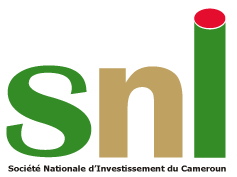Agribusinness
OILSEEDS : Imports amount to $ 17 million, which shows that there is potential to meet demand through local production. Local and regional demand for edible oils, animal feed and fuel is not met. Cameroon has favourable conditions for optimal growth, and acreage, rainfall, climate and soil are suitable for oilseed production.
RICE : Ninety percent of the quantity of rice consumed locally is imported, indicating a significant gap between domestic supply and demand. Rice is the second staple food in the country. World consumption is expected to grow significantly and is not likely to be offset by the moderate rise in production, which shows a gap between global supply and demand. Agricultural conditions are suitable for rice cultivation, a high interest expressed and demonstrated by foreign investors, proof of inherent potential in this sector.
MAIZE : Fifteen percent of local maize needs are met through imports, indicating a gap between domestic supply and demand and the possibility of boosting production and bridging the gap; global demand for maize for use in the biofuel and commodities sectors is expected to rise without being met by increased supply and, owing to the projected world supply shortfalls, the optimal production zone in Cameroon constitutes a vast potential for job creation.
Tourism
Cameroon, an officially English/French bilingual country, has enormous potential for tourism, hence the appellation "Africa in miniature". Climate diversity, ecological curiosities and human variety emerge as a concentrate of all the curiosities to be found in Africa. Several tourist sites are scattered throughout the territory, giving rise to all kinds of tourism:
- The beaches of Kribi and Limbe for seaside tourism
- The chiefdoms of the West, the Pygmy camps in the East and South of the country for cultural tourism
- The national parks of the North and the Far-North regions, the Lobe falls and the caves of the South for photo safaris
- The mountain range of the West with Mount Cameroon which culminates at 4070m, the Mandara Mountains of the Far-North for mountain hiking
- 47 hunting areas scattered throughout the national triangle for hunting tourism
- Agritourism in the numerous plantations of flowers, coffee, cocoa, rubber, oil palm, tea, pepper, tomatoes and other pepper.
Development of tourism ranks 5th on the scale of priorities of the Head of State in his programme to build the future of Cameroon in 10 points provided for in the current seven-year term.
To ensure the development of Cameroonian tourism and promote destination Cameroon, two major thrusts were implemented: the opening of a tourist information bureau in Paris for Europe in October 2000 and the creation of a National Tourism Board responsible for putting in place a sound strategy to boost the tourism sector.
